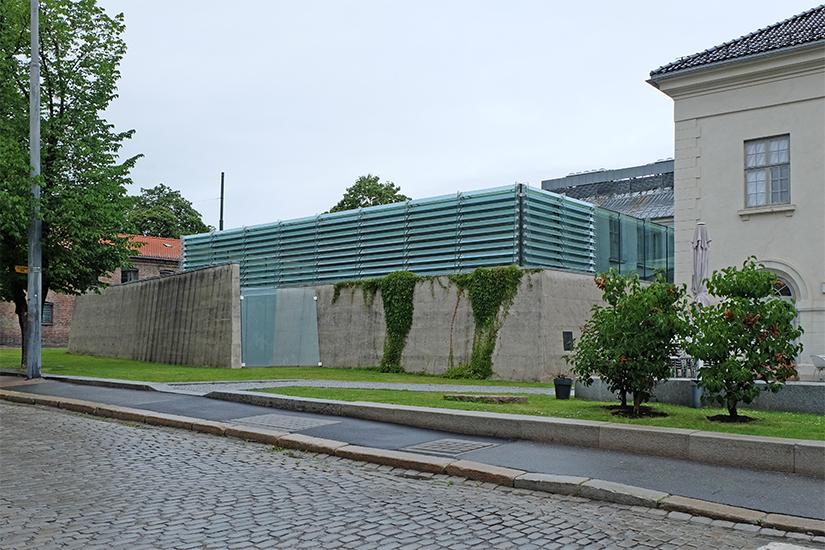 |
 |
 |
 |

National Museum of Architecture
Bankplassen 3, Oslo
2003 - 2008
The
Norwegian National Museum of Architecture in Oslo is a branch of the
National Museum of Art, Architecture and Design. This institution took
over the oldest premises of the Norwegian Central Bank in downtown
Oslo, designed by Christian Gorsch. The architect Sverre Fehn
was responsible for both the refurbishment of the old building, which
was completed in 1830 and is considered to be one of Norway's first
monumental buildings in the Empire (Regency) style, as well as the
design of the new exhibition pavilion. The intervention on the historic
premises was undertaken with the aim, to recreate the original
character of the building and accentuating the interaction of old and
new elements and spaces. As a consequnece all undesirable additions of
a more recent date have been removed in order to restore and adapt the
original spatial dimensions and characteristics (at least partly).
The elevations of the main building have been restored to their
original appearance. Access to the museum is made through the original
building. Adjacent to the main entrance are to be found the general
public spaces, such as the lobby with receptions, café, bookshop and
exhibition rooms. To the south is an acces to the adjacent park,
enabling outdoor catering during the summer months. The new exhibition
pavilion is based on the idea of an introverted space, layed out on a
square ground plan. This square is structured by four masive pillars,
bearing a delicate shell-shaped roof of concrete. The façades are made
almost exclusively of glass, and constitute a thin layer between
outdoor and indoor areas. The glass pavilion is surrounded by external
in-situ concrete walls, extending the sense of the space and giving the
exhibitions a calm backdrop. At the same time, the relationship between
extensive glazings and the concrete walls accentuates the experience of
introversion and extroversion. The experience of the space is strongly
influenced by the daylight and the view of the sky and the surrounding
environment. A restrained palette of materials was employed in the
design of this project, using mainly tiles, white pine, lime plaster,
while oak, glass, marble and stainless steel where used for new
building elements and fittings. The new pavilion is used for the
temporary exhibitions, while the permanent collection of the museum is
housed in the former repository building. On the first floor of the old
building are the library, the museum's administration and assembly
rooms, while the two top floors of the repository building are occupied
by the archives for photography and drawing collections together with
the registration.
